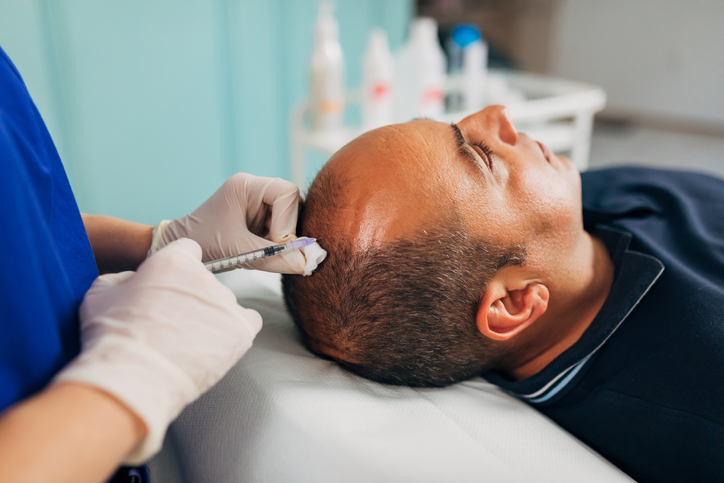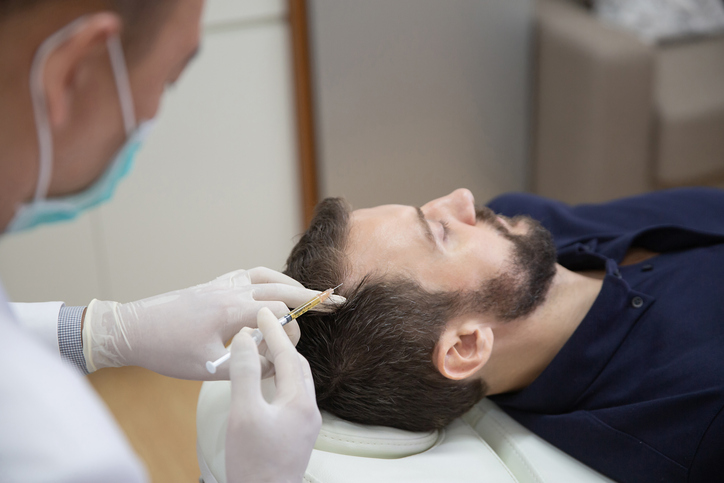Hair loss is a common concern among men, and finding a long-term solution is a top priority for many individuals experiencing this issue. Hair transplant procedures have gained popularity as an effective way to restore hair growth and address male pattern baldness. However, before undergoing a hair transplant, it’s crucial to understand whether it provides a permanent solution. In this article, we will explore the durability of male hair transplants and shed light on what individuals can expect in terms of long-term results.
Hair transplant procedures involve the transplantation of hair follicles from a donor area (typically the back or sides of the scalp) to the recipient area (the bald or thinning area). These transplanted follicles are typically resistant to the hormone dihydrotestosterone (DHT), which is responsible for male pattern baldness. As a result, the transplanted hair is less likely to fall out over time.
The two primary techniques used in hair transplantation are Follicular Unit Transplantation (FUT) and Follicular Unit Extraction (FUE). In FUT, a strip of hair-bearing skin is removed from the donor area, and the individual follicular units are dissected and transplanted into the recipient area. In FUE, individual follicular units are directly extracted from the donor area and transplanted into the recipient area. Both techniques can provide natural-looking results and offer the potential for long-lasting hair restoration.
It’s important to note that while a hair transplant can provide permanent results, it does not prevent further hair loss. Male pattern baldness is a progressive condition, and hair loss may continue in areas that have not been treated with a hair transplant. Therefore, it’s essential to have a comprehensive understanding of your pattern of hair loss and set realistic expectations with your hair transplant surgeon.
The transplanted hair follicles are typically taken from the donor area, where the hair is genetically programmed to resist the effects of DHT. These follicles retain their DHT-resistant characteristics even after transplantation. As a result, the transplanted hair is less susceptible to the effects of male pattern baldness and has a higher chance of remaining in place for the long term.
After the hair transplant procedure, it’s common for the transplanted hair to shed within a few weeks. This shedding is a normal part of the hair growth cycle and should not be a cause for concern. The transplanted follicles will then enter a dormant phase before new hair growth starts to occur. It takes time for the transplanted hair follicles to establish a blood supply and begin producing new hair. The initial growth may be thin or fine, but it will gradually thicken and become more robust over time.
Most individuals will start to see significant hair growth and improvement in hair density within six to twelve months after the transplant. The final results of a hair transplant can typically be assessed around the one-year mark. It’s important to note that individual results may vary, and some patients may require additional touch-up sessions to achieve their desired outcome.
To maximize the longevity of a hair transplant, some individuals choose to complement the procedure with medications like Finasteride and Minoxidil. Finasteride is an oral medication that works by reducing the production of dihydrotestosterone (DHT), a hormone that contributes to hair loss. By inhibiting DHT, Finasteride can help slow down hair loss and potentially preserve the health of existing hair follicles.
Minoxidil, on the other hand, is a topical solution that stimulates hair growth. It is applied directly to the scalp and promotes blood circulation, which can rejuvenate hair follicles and encourage hair regrowth. Minoxidil is available over the counter and is commonly used as part of a comprehensive hair loss treatment plan.
When used in conjunction with a hair transplant, Finasteride and Minoxidil can enhance the overall results and help maintain the existing hair. They can be particularly beneficial for individuals with a family history of extensive hair loss or those experiencing ongoing hair thinning.
It’s important to note that while Finasteride and Minoxidil can be effective, they are not guaranteed to work for everyone. Individual responses to these medications may vary, and results may take several months to become noticeable. It’s crucial to consult with a medical professional before starting any hair loss treatment to determine the most suitable approach for individual needs.
To Conclude, it is essential to follow the post-operative instructions provided by your hair transplant surgeon. These instructions may include avoiding certain activities or products that could potentially damage the transplanted hair follicles. Additionally, a healthy lifestyle, proper hair care, and managing any underlying factors contributing to hair loss can also help maintain the results of the hair transplant for an extended period. Male hair transplant procedures offer a promising solution for addressing hair loss and restoring natural hair growth. While a hair transplant can provide long-lasting results, it’s important to understand that it does not halt the progression of male pattern baldness. Hair loss in untreated areas may continue over time. By consulting with a qualified hair transplant surgeon and setting realistic expectations, individuals can make informed decisions about undergoing a hair transplant and take steps to maintain their results for as long as possible.





